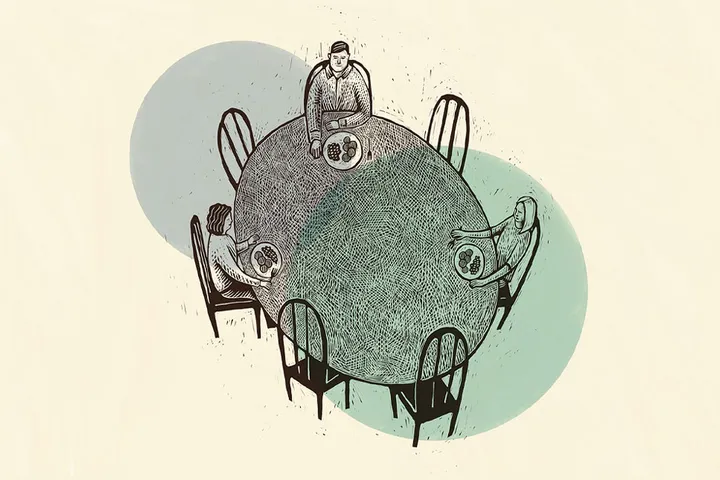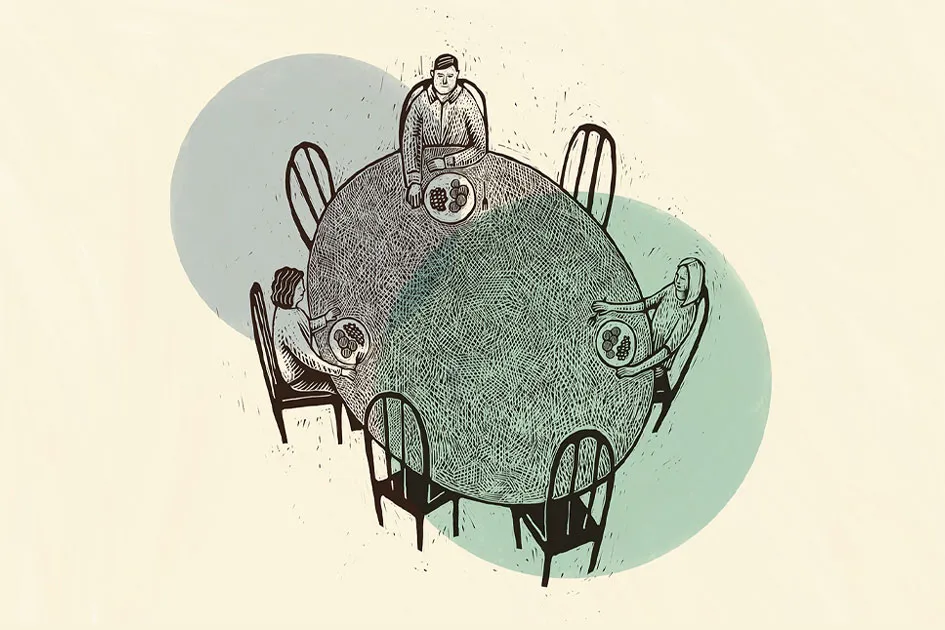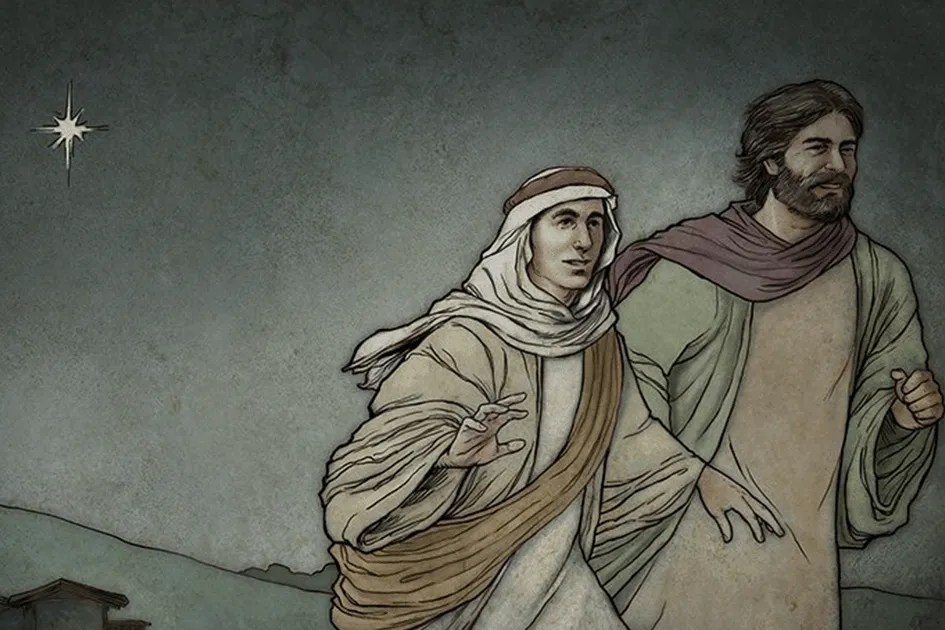
On a recent trip to Florence, my family and I made our way first thing to the city’s famous Duomo (Italian for “cathedral”) built over 140 years and completed in 1436. Old churches always are high on our list, and we were eager to get into this one. We waited a half-hour in line only to learn Santa Maria del Fiore was mysteriously closed. Our bad luck lasted the rest of the day, with tired-legged children, excessive sweating, and too-long waits to get into just about any noteworthy site.
I woke up early the next morning and went back alone, taking the first train. When I walked out in the station in Florence, I was surprised to find myself alone on the streets, walking toward a completely unattended Santa Maria del Fiore. A pleasant surge of greed went through me at having the place to myself. I stood awhile looking at the marble facade’s patterned green, white, and pink, its height reaching toward the blue expanse above. Just then sirens blared toward me as an ambulance came into view and crossed the piazza, where countless visitors would soon stand gawking and bumping into one another.
I planned to come back later and stopped for an espresso on my way to the Uffizi Gallery, where I spent several hours looking at paintings and soaking up rare moments of air conditioning—there had been a heatwave in Europe that week, and the city was unbearably hot. By the time I came out of the museum, the streets were heaving. Heat emanated from every direction—off the buildings and streets, off an endless sea of people. I thought about waiting to get into the Duomo but decided I needed a break from the crowds and chose to walk toward San Niccolò, a quieter, less populated neighborhood across the Arno River. I paused halfway over the bridge to watch a group of friends kayak together, laughing at a joke I couldn’t hear, as their paddles cut through the river’s sun-brilliant surface. A breeze whispered through the balustrade, which I took as a sign to keep moving.
I woke up early the next morning and went back alone, taking the first train.
Dehydrated by the time I arrived in San Niccolò, I stopped to buy two bottles of water, immediately guzzling one in the neighborhood’s deep shade. And then I began the walk up to Piazzale Michelangelo, where I'd been told I could find a replica of Michelangelo’s David standing watch over the city. David, the poet-king. The shepherd who became a warrior. Man of grave mistakes, yet a man after God’s own heart.
I zigzagged my way up the hillside’s paved path only to rise onto the piazzale and find yet another sizable crowd drinking beer and coffee. They were buying souvenirs and taking selfies while loud music played from a nearby food truck. David towered above us, stoic in his attention, as I squeezed my way to a sliver of open railing between a kissing couple and a tour group. The view was stunning—all of Florence at a glance, the duomo rising above the smaller buildings like a mother hen gathering her chicks.
I thought about how the duomo had been built at a time when faith was at the center of communal life, in contrast to our present moment’s downward trend in church attendance. The great cathedrals can no longer survive without tourists—people who often have no context for the art and architecture they’re seeing but nonetheless feel something they seldom, if ever, experience elsewhere. Sitting beneath the great domes during choral evensong, perhaps, or lighting candles in a stone chapel—you can be filled with a sense of wonder in an explicable way. It has something to do with the devotion of generations, of laborers who carved and built these houses of worship over the decades, many of whom died before the project was completed.
The duomo had been built at a time when faith was at the center of communal life, in contrast to our present moment’s downward trend in church attendance.
“To you, O Lord, belongs steadfast love. For you will render to a man according to his work,” David wrote in Psalm 62:12 (ESV). I can’t help but ask what my life is building—whether I’m making a cathedral of my time breathing the air God has apportioned to me. The artisans who fit the green and pink marble with the white, Bruneschelli who engineered Santa Maria del Fiore’s dome, and the workers who constructed it, had a concrete way of answering that question. Of seeing their purpose with their own eyes. But perhaps for us, who build in the city of our soul, the process is the same: Piece by piece, moment by moment, our life becomes a grace-filled house of God in uncountable small, intentional moments.
I stood there a long time at the railing looking out over Florence, watching more groups of kayakers float freely on the Arno’s currents until the crowd had started to thin. I drank the second water bottle and made my way down the hill, my eye on the cathedral until I no longer saw it but could feel it was there.





